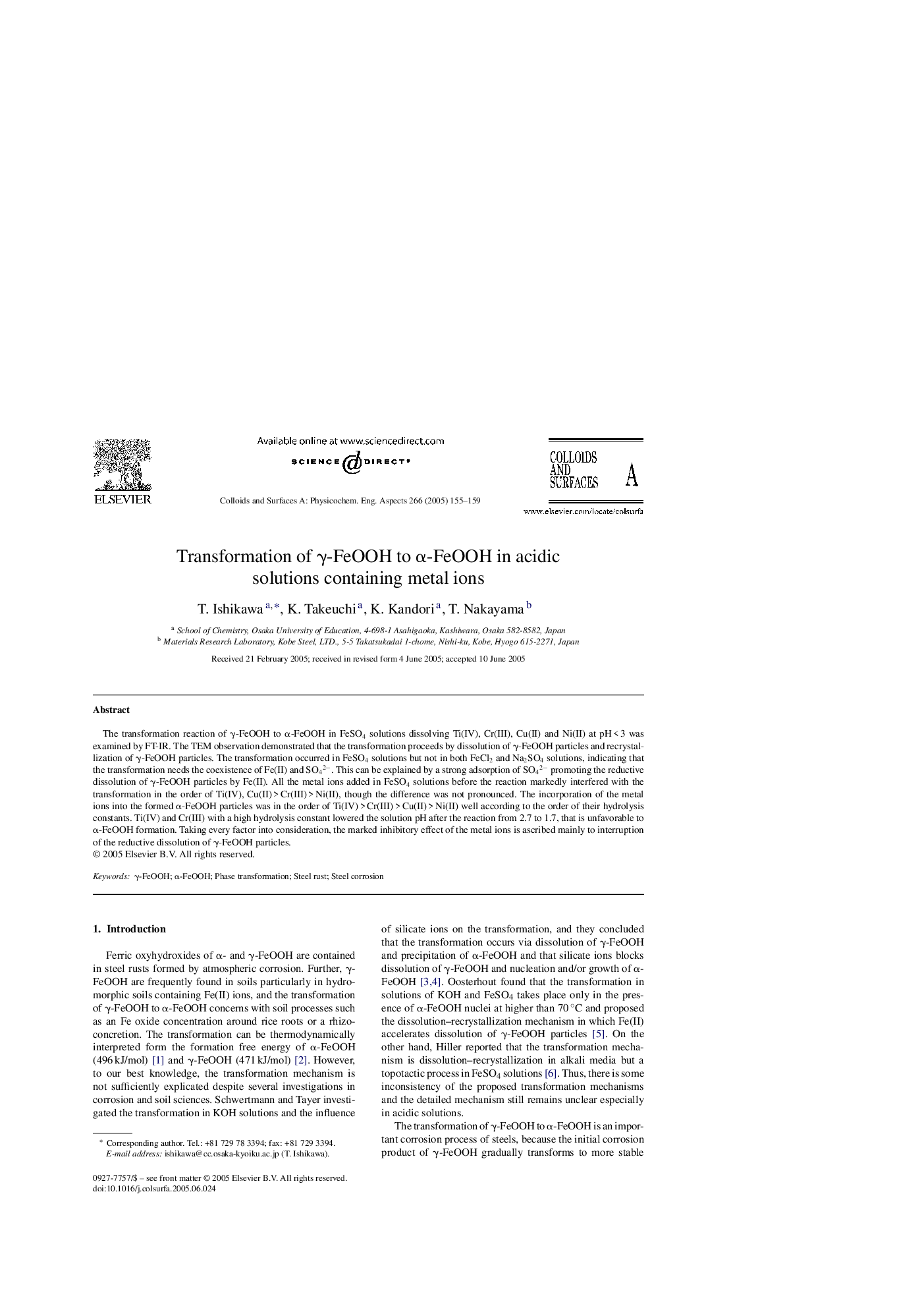| Article ID | Journal | Published Year | Pages | File Type |
|---|---|---|---|---|
| 9675663 | Colloids and Surfaces A: Physicochemical and Engineering Aspects | 2005 | 5 Pages |
Abstract
The transformation reaction of γ-FeOOH to α-FeOOH in FeSO4 solutions dissolving Ti(IV), Cr(III), Cu(II) and Ni(II) at pH < 3 was examined by FT-IR. The TEM observation demonstrated that the transformation proceeds by dissolution of γ-FeOOH particles and recrystallization of γ-FeOOH particles. The transformation occurred in FeSO4 solutions but not in both FeCl2 and Na2SO4 solutions, indicating that the transformation needs the coexistence of Fe(II) and SO42â. This can be explained by a strong adsorption of SO42â promoting the reductive dissolution of γ-FeOOH particles by Fe(II). All the metal ions added in FeSO4 solutions before the reaction markedly interfered with the transformation in the order of Ti(IV), Cu(II) > Cr(III) > Ni(II), though the difference was not pronounced. The incorporation of the metal ions into the formed α-FeOOH particles was in the order of Ti(IV) > Cr(III) > Cu(II) > Ni(II) well according to the order of their hydrolysis constants. Ti(IV) and Cr(III) with a high hydrolysis constant lowered the solution pH after the reaction from 2.7 to 1.7, that is unfavorable to α-FeOOH formation. Taking every factor into consideration, the marked inhibitory effect of the metal ions is ascribed mainly to interruption of the reductive dissolution of γ-FeOOH particles.
Related Topics
Physical Sciences and Engineering
Chemical Engineering
Colloid and Surface Chemistry
Authors
T. Ishikawa, K. Takeuchi, K. Kandori, T. Nakayama,
